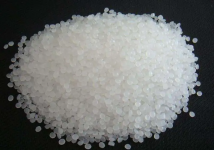read: 405 time:2025-07-16 15:38:58 from:化易天下
Ticks are common pests that pose serious health risks to humans and animals due to their ability to transmit diseases. As a result, many people look for effective ways to eliminate them quickly. One question that often arises is: will acetone kill a tick? In this article, we will explore whether acetone can be used to kill ticks, how it works, and what precautions should be taken when using it.
Ticks are small arachnids that feed on the blood of mammals, birds, and sometimes reptiles and amphibians. They are notorious for spreading diseases such as Lyme disease, Rocky Mountain spotted fever, and other tick-borne illnesses. Controlling ticks is essential to prevent these health risks, and this requires a reliable method of killing them upon discovery.
Acetone is a powerful solvent commonly found in nail polish removers, paint thinners, and other household and industrial products. It has a strong dehydrating effect, which disrupts the cellular structure of organic materials, making it lethal to small organisms. Given its properties, the question arises: will acetone kill a tick? The answer is yes, acetone can kill ticks, but the process involves specific mechanisms.
Acetone works by rapidly dissolving the outer layer of the tick's exoskeleton, leading to desiccation and death. When applied directly, acetone disrupts the tick's cellular structure, effectively killing it within minutes. However, while acetone is effective, it is crucial to understand the proper application and associated risks.
To use acetone to kill a tick, it should be applied directly to the pest. The simplest way is to dip a cotton swab or a piece of tissue in acetone and gently dab it on the tick. This method is effective because the acetone penetrates the tick's hard exoskeleton quickly, leading to death.
However, this approach should be done with caution. Avoid pouring acetone directly onto the skin, especially if the tick is attached, as this can irritate or damage your skin. If the tick is embedded, using acetone could cause the tick to burrow deeper, increasing the risk of disease transmission.
Although acetone can kill a tick, it is a highly flammable and volatile chemical that should be used with care. Here are some safety tips:
If acetone accidentally gets on the skin, rinse immediately with plenty of water. Always follow safety guidelines to minimize the risks associated with using this chemical.
While acetone can kill a tick, it may not be the most practical or safest method. Other recommended methods include:
These alternatives may offer a safer and more reliable way to handle ticks without the associated risks of using acetone.
Will acetone kill a tick? Yes, acetone can effectively kill ticks by disrupting their cellular structure and causing rapid dehydration. However, while acetone is potent, it comes with safety risks that must be carefully managed. If you decide to use acetone, apply it cautiously, ensuring minimal contact with the skin and proper ventilation. For a safer approach, consider using tick removal tools or other less hazardous methods that provide effective tick control without the associated dangers of acetone use.

Jincheng Petrochemical's 300000 ton polypropylene plant successfully trial production, 2024 polypropylene market analysis

The ABS market remains sluggish, what is the future direction?

Market differentiation of bisphenol A intensifies: prices rise in East China, while prices generally decline in other regions

The production method and process flow of silicone acrylic lotion, and what are the common raw materials